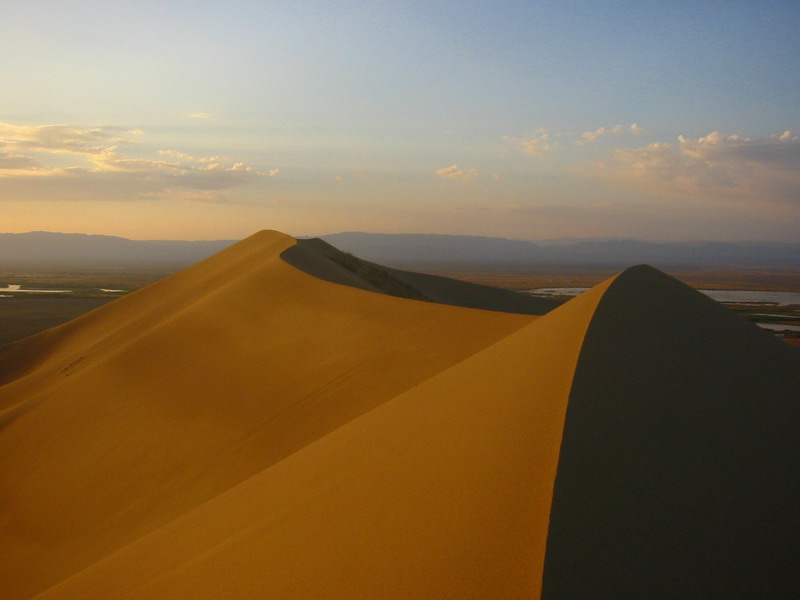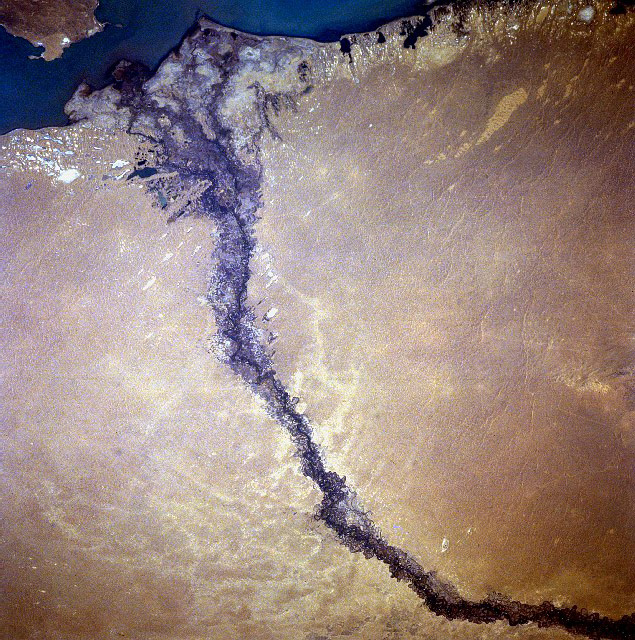|
Zhongar-Alatau National Park
Zhongar-Alatau National Park ( kk, Жоңғар Алатауы ұлттық паркі, ''Joñğar Alatauy ūlttyq parkı''), also Jungar Alatau, or Dzungurian Alatau, was created in 2010 to protect the unique ecology of the Dzungarian Alatau, an isolated, glaciated mountain range in Kazakhstan, on the southeastern border with China. One stated reason for creating the park is to protect forests of wild fruit trees, including apricots, barberry, cherries, and currants. Approximately 1% of the land area of the park is forested with Sievers Apple trees, which are the progenitors of all cultured apple varieties in the world. The park is 300 km long (west-to-east), and spreads across Aksu District, Sarkand District and Alakol District of Almaty Region, 300 km northeast of the regional city of Almaty. Topography The park sits on the northern slope of the Dzungarian Alatau, a range between the Tian Shan to the south and the Altai Mountains to the north. The park's terrain i ... [...More Info...] [...Related Items...] OR: [Wikipedia] [Google] [Baidu] |
Malus Sieversii
''Malus sieversii'' is a wild apple native to the mountains of Central Asia in southern Kazakhstan. It has recently been shown to be the primary ancestor of most cultivars of the domesticated apple (''Malus domestica''). It was first described as ''Pyrus sieversii'' due to its similarities with pears in 1833 by Carl Friedrich von Ledebour, a German naturalist who saw them growing in the Altai Mountains. ''Malus sieversii'' grows in many different habitats. They prefer high temperatures and short winters, but they are also found in the Tian Shan Mountains with long and harsh winters. They are distributed mainly within the Yili valley as the damp climate is suitable for their growth. It is a deciduous tree growing , very similar in appearance to the domestic apple. Its pollen grains vary in size and are seen to be ovular when dry and spherical when swelled with water. Its fruit is the largest of any species of ''Malus'' except ''domestica'', up to 7 cm in diameter, equal in s ... [...More Info...] [...Related Items...] OR: [Wikipedia] [Google] [Baidu] |
Aksu River (Kazakhstan)
The Aksu ( kk, Ақсу, ''Aqsu''; russian: Аксу) is a river of the Balkhash-Alakol Basin, Kazakhstan. It originates in the Dzungarian Alatau Mountains near the border with China and flows into Lake Balkhash. In Turkic languages, the name ' ak+ su' literally means "clean/white water". The Aksu is one of the main rivers of the historic region of Zhetysu. It is long, and has a drainage basin of . Course The river flows north from the border with China before turning north-westward passing by Mata ...[...More Info...] [...Related Items...] OR: [Wikipedia] [Google] [Baidu] |
National Parks Of Kazakhstan
References See also *List of protected areas in Kazakhstan {{DEFAULTSORT:National parks of Kazakhstan Kazakhstan geography-related lists, National parks Lists of national parks, Kazakhstan National parks of Kazakhstan, Lists of tourist attractions in Kazakhstan, National parks ... [...More Info...] [...Related Items...] OR: [Wikipedia] [Google] [Baidu] |
Snow Leopards
The snow leopard (''Panthera uncia''), also known as the ounce, is a felid in the genus ''Panthera'' native to the mountain ranges of Central and South Asia. It is listed as Vulnerable on the IUCN Red List because the global population is estimated to number fewer than 10,000 mature individuals and is expected to decline about 10% by 2040. It is threatened by poaching and habitat destruction following infrastructural developments. It inhabits alpine and subalpine zones at elevations of , ranging from eastern Afghanistan, the Himalayas and the Tibetan Plateau to southern Siberia, Mongolia and western China. In the northern part of its range, it also lives at lower elevations. Taxonomically, the snow leopard was long classified in the monotypic genus ''Uncia''. Since phylogenetic studies revealed the relationships among ''Panthera'' species, it has been considered a member of that genus. Two subspecies were described based on morphological differences, but genetic differences b ... [...More Info...] [...Related Items...] OR: [Wikipedia] [Google] [Baidu] |
Evapotranspiration
Evapotranspiration (ET) is the combined processes by which water moves from the earth’s surface into the atmosphere. It covers both water evaporation (movement of water to the air directly from soil, canopies, and water bodies) and transpiration (movement of water from the soil, through roots and bodies of vegetation, on leaves and then into the air). Evapotranspiration is an important part of the local water cycle and climate, as well as measurement of it plays a key role in agricultural irrigation and water resource management. Definition Evapotranspiration is a combination of evaporation and transpiration, measured in order to better understand crop water requirements, irrigation scheduling, and watershed management. The two key components of evapotranspiration are: * Evaporation: the movement of water directly to the air from sources such as the soil and water bodies. It can be affected by factors including heat, humidity, and wind speed. * Transpiration: the move ... [...More Info...] [...Related Items...] OR: [Wikipedia] [Google] [Baidu] |
Semi-arid Climate
A semi-arid climate, semi-desert climate, or steppe climate is a dry climate sub-type. It is located on regions that receive precipitation below potential evapotranspiration, but not as low as a desert climate. There are different kinds of semi-arid climates, depending on variables such as temperature, and they give rise to different biomes. Defining attributes of semi-arid climates A more precise definition is given by the Köppen climate classification, which treats steppe climates (''BSk'' and ''BSh'') as intermediates between desert climates (BW) and humid climates (A, C, D) in ecological characteristics and agricultural potential. Semi-arid climates tend to support short, thorny or scrubby vegetation and are usually dominated by either grasses or shrubs as it usually can't support forests. To determine if a location has a semi-arid climate, the precipitation threshold must first be determined. The method used to find the precipitation threshold (in millimeters): *multiply by ... [...More Info...] [...Related Items...] OR: [Wikipedia] [Google] [Baidu] |
Tian Shan Montane Steppe And Meadows
The Tian Shan montane steppe and meadows ecoregion (WWF ID: PA1019) covers a 2,000 km long stretch of grasslands of the isolated Tian Sham mountains of Central Asia. It is characterized by high-altitude flat and rolling grasslands. Location and description The ecoregion stretches around the lower altitudes of the Tian Shan mountain ridge, running for approximately 2,000 km from western Kyrgyzstan to eastern Xinjiang Province in China. It separates the arid Tarim Basin and Taklimakan Desert to the south from the Junggar Basin and Kazakh Shield to the north. Running up the middle of the ecoregion is the main ridge of the Tian Shan, with some middle altitudes supporting conifer forests in the Tian Shan montane conifer forests ecoregion. Climate The climate of the ecoregion is '' cold semi-arid'' (Köppen climate classification (BSk)). This climate is generally characterized as having precipitation greater than a true desert, and also a colder temperature. Flora and fauna B ... [...More Info...] [...Related Items...] OR: [Wikipedia] [Google] [Baidu] |
Lake Balkhash
Lake Balkhash ( kk, Балқаш көлі, ''Balqaş kóli'', ; russian: озеро Балхаш, ozero Balkhash) is a lake in southeastern Kazakhstan, one of the largest lakes in Asia and the 15th largest in the world. It is located in the eastern part of Central Asia and sits in the Balkhash-Alakol Basin, an endorheic (closed) basin. The basin drains seven rivers, the primary of which is the Ili, bringing most of the riparian inflow; others, such as the Karatal, bring surface and subsurface flow. The Ili is fed by precipitation, largely vernal snowmelt, from the mountains of China's Xinjiang region. The lake currently covers about . However, like the Aral Sea, it is shrinking due to diversion and extraction of water from its feeders. The lake has a narrow, quite central, strait. The lake's western part is fresh water. The lake's eastern half is saline. The east is on average 1.7 times deeper than the west. The largest shore city is named Balkhash and has about 66,000 inhab ... [...More Info...] [...Related Items...] OR: [Wikipedia] [Google] [Baidu] |
Lepsy River
The Lepsy ( kk, Лепсі, ''Lepsı''; russian: Лепсы) also known as the Lepsa River or the Lepsi River, is a river of the Balkhash-Alakol Basin, south-eastern Kazakhstan. It originates in the Dzungarian Alatau Mountains north of the border with China and flows into Lake Balkhash. The river is long and has a basin area of . The Lepsy is the easternmost of the two small rivers that flow into the eastern Balkhash on the south bank, the other being the Aksu. The Lepsy is one of the main rivers of the historic region of Zhetysu. Course The river flows north from the border with China before turning north-westward north of Sarkand and then west before turning north northward when it reaches the Saryesik-Atyrau Desert The Saryesik Atyrau Desert ( kk, Сарыесікатырау, ''Saryesıkatyrau'') is a desert in the Balkhash-Alakol Basin, [...More Info...] [...Related Items...] OR: [Wikipedia] [Google] [Baidu] |
Altai Mountains
The Altai Mountains (), also spelled Altay Mountains, are a mountain range in Central Asia, Central and East Asia, where Russia, China, Mongolia and Kazakhstan converge, and where the rivers Irtysh and Ob River, Ob have their headwaters. The massif merges with the Sayan Mountains in the northeast, and gradually becomes lower in the southeast, where it merges into the high plateau of the Gobi Desert. It spans from about 45° to 52° N and from about 84° to 99° E. The region is inhabited by a sparse but ethnically diverse population, including Russian people, Russians, Kazakh people, Kazakhs, Altai people, Altais, Mongol people, Mongols and Volga Germans, though predominantly represented by indigenous ethnic minorities of semi-nomadic stock. The local economy is based on bovine, sheep, horse animal husbandry, husbandry, hunting, agriculture, forestry, and mining. The Altaic languages, Altaic language family takes its name from this mountain range. Etymology and modern names ... [...More Info...] [...Related Items...] OR: [Wikipedia] [Google] [Baidu] |
Almaty Region
Almaty Region ( kk, Алматы облысы, Almaty oblysy; russian: Алматинская область, Almatinskaya oblast) is a region in Kazakhstan, located in the southeastern part of the country. Its capital, from 1997 to 2022 was the city of Taldykorgan. But with the creation of the new Jetysu Region in 2022, Taldykorgan was chosen to be its capital and the capital of Almaty region was moved to the city of Kunayev. Geography Almaty Region surrounds the city of Almaty. The region borders Kyrgyzstan and Xinjiang in the People's Republic of China. The region also touches three other regions of Kazakhstan: Jambyl Region to the west, Karaganda Region to the northwest, and East Kazakhstan Region to the north. Almaty Region has an area of 224,000 square kilometres. Much of the northwestern border of the region runs along Lake Balkhash, whose main affluent, the Ili River, is the most significant river of the region. In the region's northeast, it shares the four lakes of ... [...More Info...] [...Related Items...] OR: [Wikipedia] [Google] [Baidu] |





